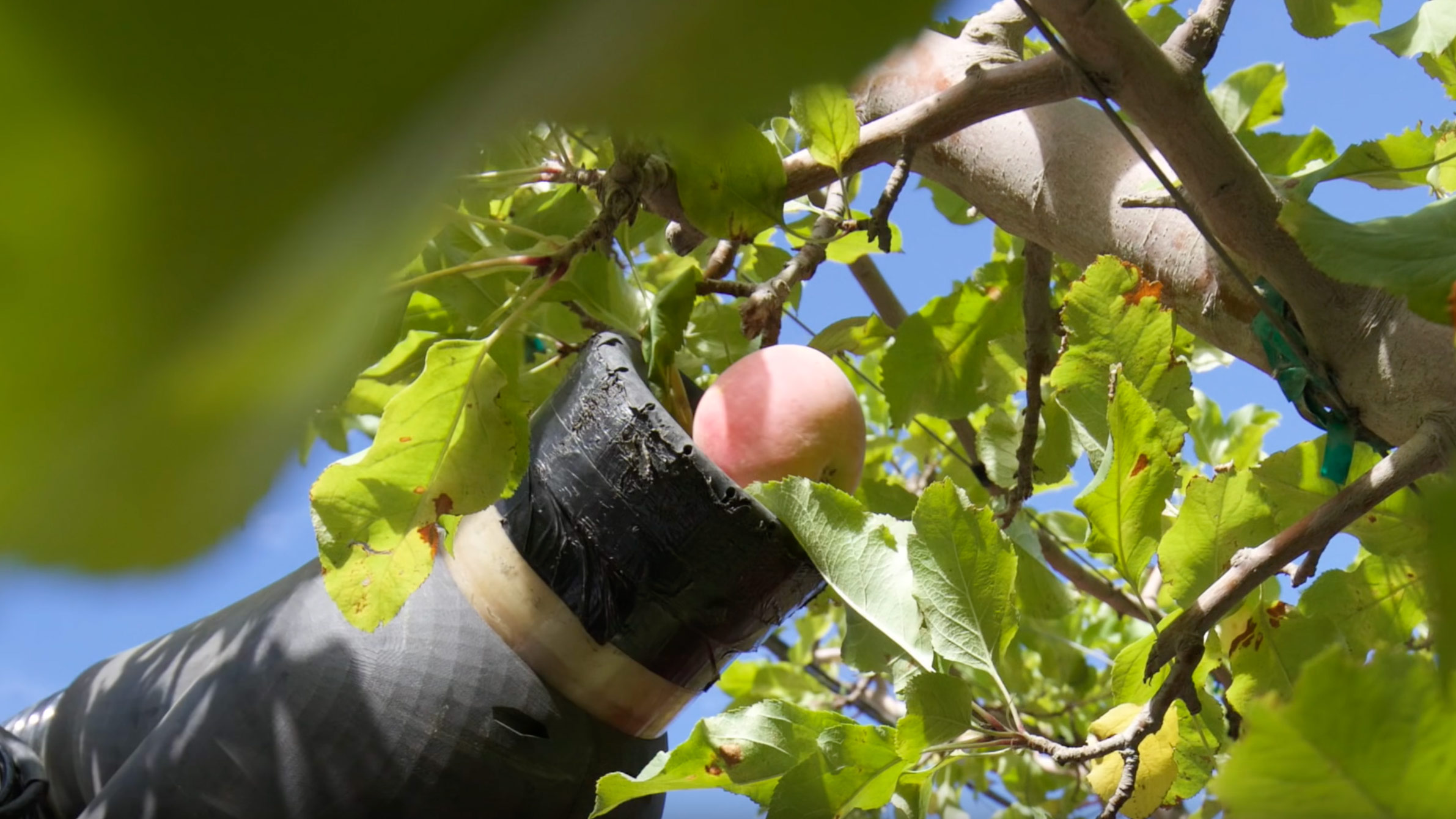Apple-Picking Robot Prepares to Compete for Farm Jobs

Roughly $4 billion worth of apples are harvested in the U.S. each year. Startup Abundant Robotics hopes to suck up some of it with a machine that vacuums ripe fruit off the tree.
Today apple orchards rely on people to pick their crops. Dan Steere, cofounder and CEO of Abundant, says recent tests in Australia, where apple season is under way, proved that the company’s prototype can spot apples roughly as accurately as a human, and pull them down just as gently. The machine deposits apples in the same large crates that human pickers use.
“The results convinced us that we’re on the right path to scale up to a full commercial system,” says Steere.
His company is planning more tests of its prototype in Washington this fall and aims to have a multi-armed system on sale to growers in 2018. “Our commercial system will pick at rates that match crews of tens of people,” says Steere.
Abundant spun out of independent research lab SRI in 2016 and was initially funded in part by the Washington Tree Fruit Research Commission. Mike Willett, manager at the commission, says that growers are eager for automation because of a long-term decline in the availability of seasonal agricultural labor in the U.S.
The current political climate has sharpened those concerns, he says. President Trump’s tough talk on immigration has farmers of all kinds of crops worried that immigrant labor will dry up. Abundant announced $10 million of new investment funding Wednesday, led by Google’s investment arm.
Manoj Karkee, an associate professor at Washington State University, says that what he has seen of Abundant’s technology is impressive.
Years of research on automating the harvest of apples and similar crops, such as pears, had previously come to naught because of the challenges of getting machines to identify fruit reliably and handle it gently enough, he says. But improvements in computing power, vision algorithms, and robotics have made striking new types of automation possible in a variety of industries, agriculture among them (see “Mining 24 Hours a Day with Robots”).
Changes to orchard design have also made the problem more tractable. Growers have begun to plant dwarf trees and train them to have wide, shallow canopies that result in better yields and also put fruit within easy reach of an opposable thumb or vacuum nozzle.
“I think in the next three years there will be at least one machine on the market,” says Karkee. He’s been working on an alternative approach where a machine carefully shakes apples off the tree by grabbing branches (this approach is already used for some apples destined for juicing, which don’t need to be handled so gently). Abundant’s competition also includes Israeli startup FFRobotics, which says it will test a prototype that plucks fruit with a three-fingered gripper in Washington this fall.
Willett, of the Washington Tree Fruit Research Commission, says there’s no shortage of growers willing to help test robotic harvesting technology. But he predicts that the machines won’t displace many jobs for a while because they will be filling vacant ones, and not all Washington’s orchards have the right kind of trees.
Steere argues that even if his machines do displace human workers, his company represents just the latest chapter in an old story. “Look at the history of agriculture going back to the 1800s,” he says. “Machinery has changed how harvesting’s done, and huge benefits to society have come from that.”
Deep Dive
Artificial intelligence
Large language models can do jaw-dropping things. But nobody knows exactly why.
And that's a problem. Figuring it out is one of the biggest scientific puzzles of our time and a crucial step towards controlling more powerful future models.
Google DeepMind’s new generative model makes Super Mario–like games from scratch
Genie learns how to control games by watching hours and hours of video. It could help train next-gen robots too.
What’s next for generative video
OpenAI's Sora has raised the bar for AI moviemaking. Here are four things to bear in mind as we wrap our heads around what's coming.
Stay connected
Get the latest updates from
MIT Technology Review
Discover special offers, top stories, upcoming events, and more.